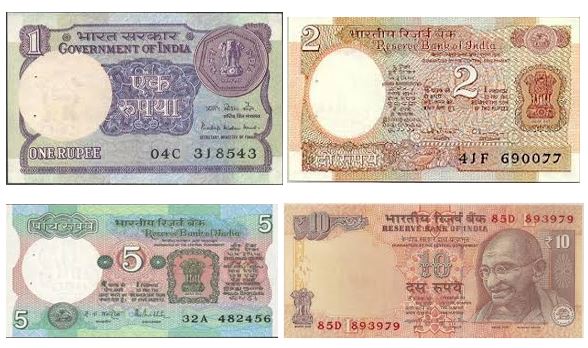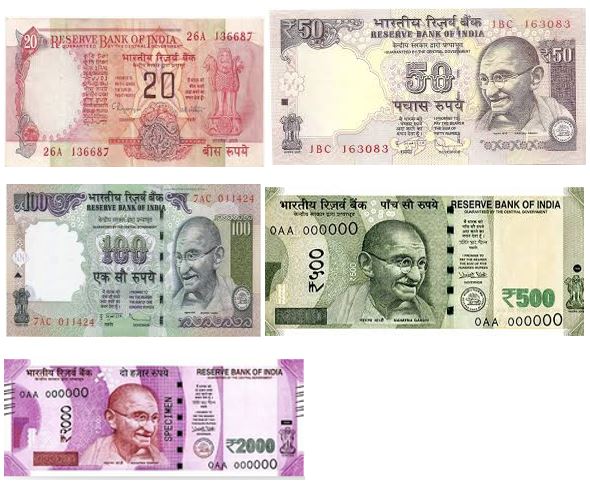In India, the official currency is the Indian Rupee, abbreviated as INR. The symbol for the Indian Rupee is ₹. The currency is issued and regulated by the Reserve Bank of India (RBI), which manages the supply and distribution of coins and banknotes across the country.
Coins in circulation come in various denominations, such as 1, 2, 5, and 10 rupees, as well as smaller values like 50 paise (although the usage of 50 paise coins has significantly decreased in recent times). These coins feature national symbols, historical figures, and various cultural and heritage motifs. Coins are commonly used for day-to-day transactions, particularly for smaller purchases.
Currency notes, on the other hand, are issued in denominations of 2, 5, 10, 20, 50, 100, 200, 500, and 2000 rupees.
In India following coins are used.

The following currency notes are used in our country.


Suppose you have a 20 rupee note and a 50 paisa coin. In other words, we express this amount as twenty rupees
and fifty paise. In the figures, we write it as ₹ 20.50.
₹ – An international symbol for Rupees 25 rupees we write as Rs. 25 or ₹ 25
When we write rupees and paise together, for example, 25 rupees and 75 paise, we write Rs. 25.75.
Rupees and paise are separated by a dot.
Conversion of Rupees into Paise
To convert rupees into paise, we must multiply the amount in rupees by 100. Let’s see some examples.
Example 1. Convert ₹ 5 into paise.
Solution. ₹ 5 = 5 × 100 = 500 p
Example 2. Convert ₹ 15.75 into paise.
Solution. ₹ 15.75 = 15.75 × 100 = 1575 p
Conversion of Paise into Rupees
To convert paise into rupees, we place a dot after two digits from the right of the number. The number on the left of the dot denotes the number of rupees. The number on the right of the dot denotes paise. Let’s see some examples.
Example 1. Convert 900 paise into rupees.
Solution. 900 p = ₹ 9.00
Example 2. Convert 1225 paise into rupees.
Solution. 1225 p = ₹ 12.25 (12 rupees and 25 paise)
Congratulations, You know all about money and its conversions. Now let’s learn about Interest and It’s addition



